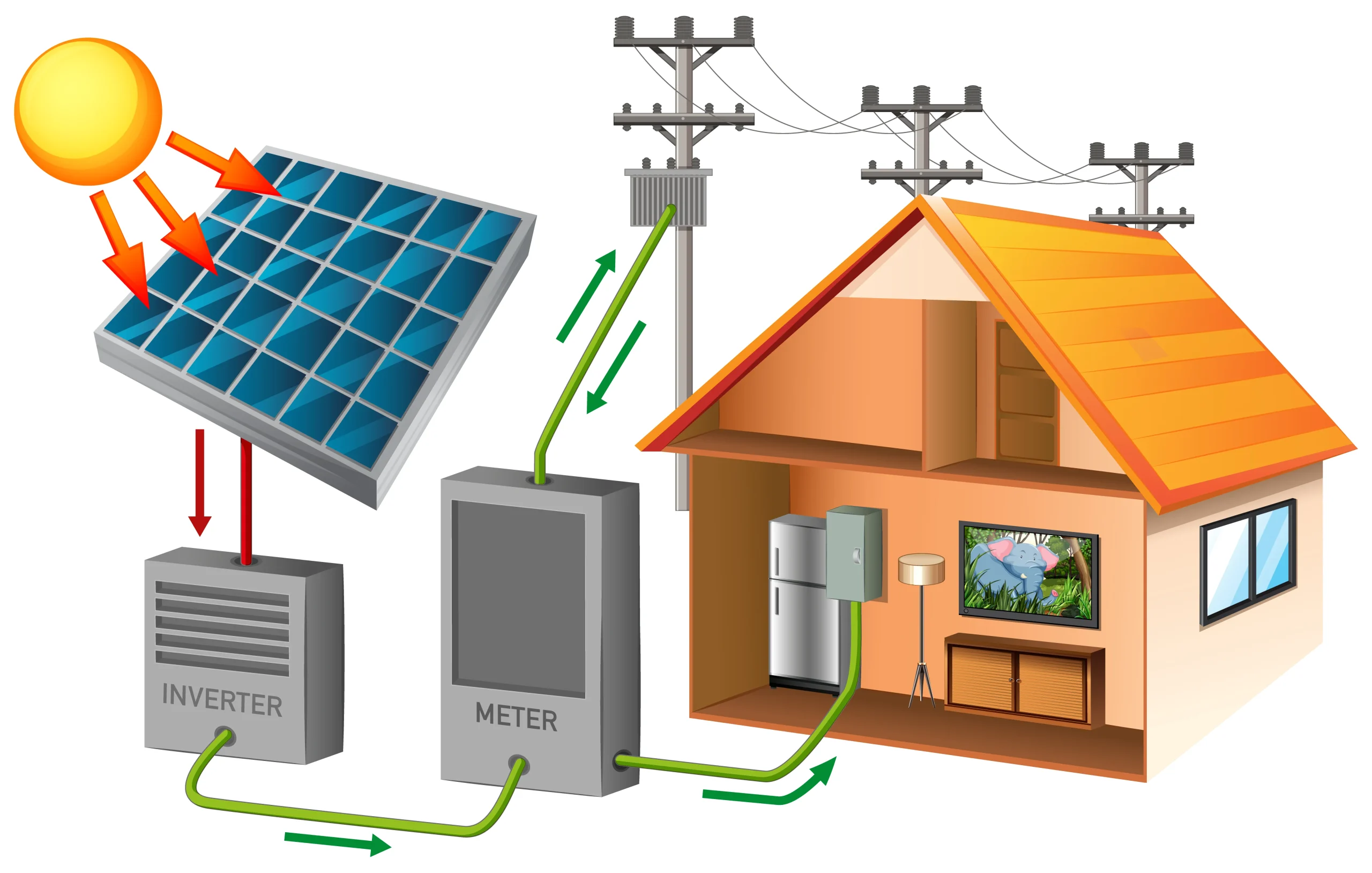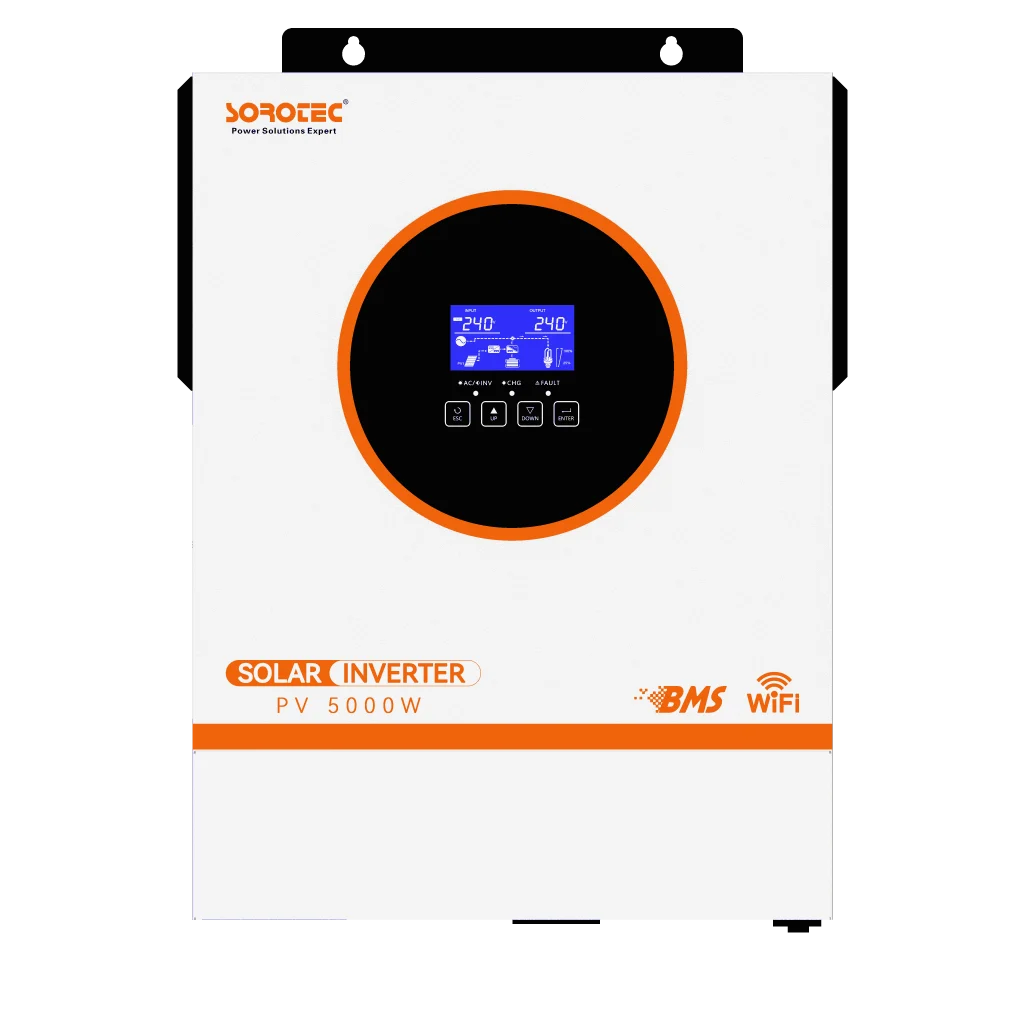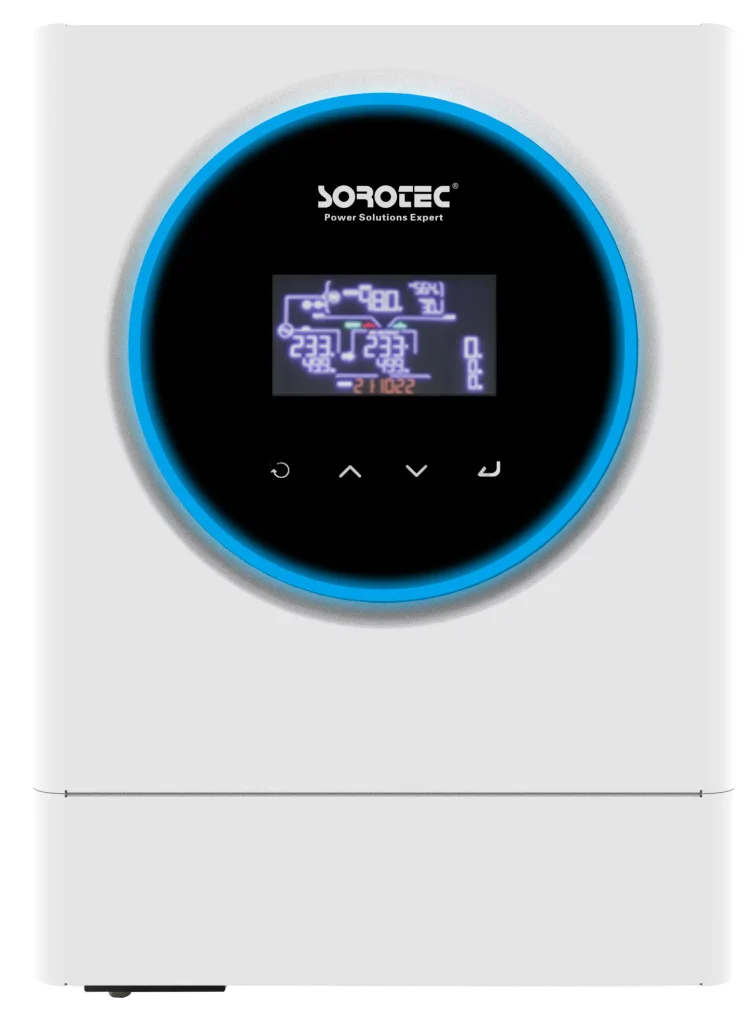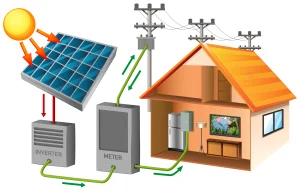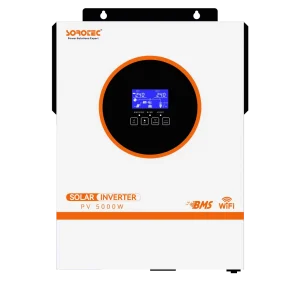What Are the Main Classifications of Photovoltaic Systems?
How Do Grid-Connected PV Systems Operate in Conventional Energy Infrastructure?
Grid-connected PV systems work alongside the utility grid. They turn sunlight into electricity and send it to the grid. This cuts down on the power you buy from the utility company. The goal is to lower your electric bill by using solar power. But these systems don’t work alone. If the grid goes down, they stop for safety.
What Defines a Grid Interactive PV System Compared to a Simple Grid-Tied Setup?
Grid-interactive systems are fancier than plain grid-connected ones. They have solar panels, batteries, and smart controls. These systems work when the grid is on or off. They keep your power running during blackouts. SOROTEC’s systems, like the Hybrid On & Off Grid Energy Storage Inverter Integrated Machine, give steady power to homes and businesses, helping local areas grow.
Which Functional Capabilities Set These Systems Apart?
The big difference is how they work. Grid-connected systems add power to the grid but don’t store it. Grid-interactive systems save extra power in batteries. They use smart controls to manage power, save energy, and keep things running during outages.
How Do Power Flow and Backup Behavior Differ Between System Types?
What Are the Differences in Power Management During Normal Operation?
Grid-connected systems send extra solar power to the grid. They pull power from the grid at night or when solar power is low. Grid-interactive systems store extra power in batteries for later. You can choose if your home uses solar, battery, or grid power. This depends on the time or energy costs, making it super flexible.
How Does Each System Respond During Grid Failures?
When the grid fails, grid-connected systems shut off. This is because of safety rules to protect utility workers. Grid-interactive systems, like SOROTEC’s Hybrid On & Off Grid Energy Storage Inverter Integrated Machine, switch to battery power super fast—in just milliseconds. This keeps your lights and gadgets on.
Can Both System Types Work With Batteries?
Grid-connected systems usually don’t have batteries. But grid-interactive systems, like SOROTEC’s, come with special ports (RS485, CAN) for battery systems. These ports help control when batteries charge or release power, making them last longer.
What Technical Components Differentiate These Architectures?
Which Inverter Technologies Are Used Across Both Configurations?
Inverters are the heart of PV systems. Grid-connected systems use simple inverters that match the grid’s power. Grid-interactive systems need fancier hybrid inverters. These can move power to batteries or the grid and back again. For example, SOROTEC’s Hybrid On & Off Grid Energy Storage Inverter REVO VM II PRO Series has built-in MPPT controls to handle both solar and battery power.
What Is the Role of Battery Storage in Interactive Designs?
Batteries are super important for grid-interactive systems. They store power for later, not just for blackouts. They help save money by using stored power when electricity costs more. SOROTEC’s battery systems have a special feature to keep batteries working well for a long time, even with lots of use.
How Do Communication Interfaces Impact Performance?
Grid-interactive systems have cool tech like RS485/CAN ports for battery control. They also use WiFi or Bluetooth for cloud monitoring. You can check your system from far away or update it easily. Most grid-connected systems don’t have these features, so they’re less smart.
When Should You Use Each Type of System?
Which Applications Are Ideal for Basic Grid Connected PV Systems?
If you live where the grid is steady and you can sell extra power back to the utility, a grid-connected system is awesome. It’s great for homes or businesses that want to cut electric bills without needing backup power. These systems are cheaper and work well in cities.
Where Do Grid Interactive Systems Offer Greater Value?
Grid-interactive systems are better in places with shaky grids or lots of blackouts. They’re perfect for remote areas with high electricity costs or unstable power. Businesses like hospitals or data centers love them because they keep power on no matter what.
What Regulatory Standards Govern Interconnection Safety?
What Utility Compliance Is Required for Grid-Tied Installations?
Grid-connected systems must follow rules like G98/G99 (UK), VDE-AR-N4105 (Germany), CEI 0-21 (Italy), or EN 50438/EN50549 (EU). Standards like COC/TORTvpeA/B:2022, G98–2022, G99–2022, VDE-AR-N4105, and VDEV0126-1-1 make sure inverters work safely during grid problems.
How Are Safety Protocols Enforced During Outages in Interactive Systems?
During blackouts, grid-interactive systems cut off from the grid to keep workers safe. SOROTEC’s hybrid inverters switch to battery power in less than 10 milliseconds. This fast switch keeps your power on without sending electricity back to the grid.
How Do These Systems Compare on Efficiency and Reliability Metrics?
Which Factors Influence Energy Conversion Efficiency Most Significantly?
Efficiency depends on the inverter, MPPT range, temperature, and how well power matches your needs. SOROTEC’s systems, like those with two MPPTs (6KW-11KW) and a wide PV input range (60~450VDC), grab the most solar power, even if it’s shady or cloudy.
What Enhances Uptime and System Resilience Over Time?
Grid-interactive systems are tougher because they use solar, batteries, or even generators. This keeps power on when the grid fails. Grid-connected systems rely only on the grid and solar, so they stop during outages.
Are There Cost Differences That Impact ROI Between These Options?
How Do Installation Costs Vary Between System Types?
Grid-connected systems cost less to set up. They don’t need batteries or fancy controls. Grid-interactive systems, like SOROTEC’s Hybrid On & Off Grid Energy Storage Inverter REVO VM IV PRO-T Series, need batteries and extra parts, so they cost more at first.
What Long-Term Economic Benefits Justify Higher Initial Costs?
Grid-interactive systems save money over time. They use stored power when electricity is pricey. They also keep businesses running during blackouts, avoiding losses. Plus, you might earn money by joining energy-saving programs.
What Product Solutions Align With Your Specific Needs Today?
Which Solutions Work Best If You Only Need a Basic Grid Connected Setup?
If you just want to save on electric bills with no backup, pick a simple grid-connected system. SOROTEC offers efficient systems with great MPPT tracking that don’t need batteries. These are perfect for city homes with steady grids.
Which Products Suit Hybrid Configurations Requiring Backup Power Capability?
For power that works with or without the grid, go for SOROTEC’s Hybrid On & Off Grid Energy Storage Inverter Integrated Machine. These have cool features like dual outputs and schedules to turn on or off based on battery levels. They work with modern batteries using RS485/CAN ports.
How Can You Select the Right PV System Type Using Expert Support?
Why Should You Evaluate Site Conditions Before Choosing a System Type?
Things like weather, blackouts, energy costs, and where your building faces affect your choice. Checking your site makes sure your system saves money and works well, not just fits your budget.
Where Can You Get Tailored Engineering Guidance Backed by Experience?
Working with SOROTEC gives you awesome support. They know all about off-grid and hybrid systems for big projects worldwide. They help you plan, build, and set up the perfect system for your needs.
FAQ
Q1: Can I upgrade my existing grid-connected system to become interactive later?
A: Yes! You can add batteries if your inverter supports hybrid mode or swap it for a new one. You’ll need the right battery controls, though.
Q2: Will a hybrid system save me money if I live somewhere with cheap electricity?
A: Maybe not right away. But if blackouts happen a lot or prices go up later, it’s a smart choice for saving money over time.
Q3: Is it safe to run appliances from an interactive system during storms?
A: Yes! If your inverter follows safety rules and switches fast during outages, it keeps appliances safe and won’t hurt anyone.


